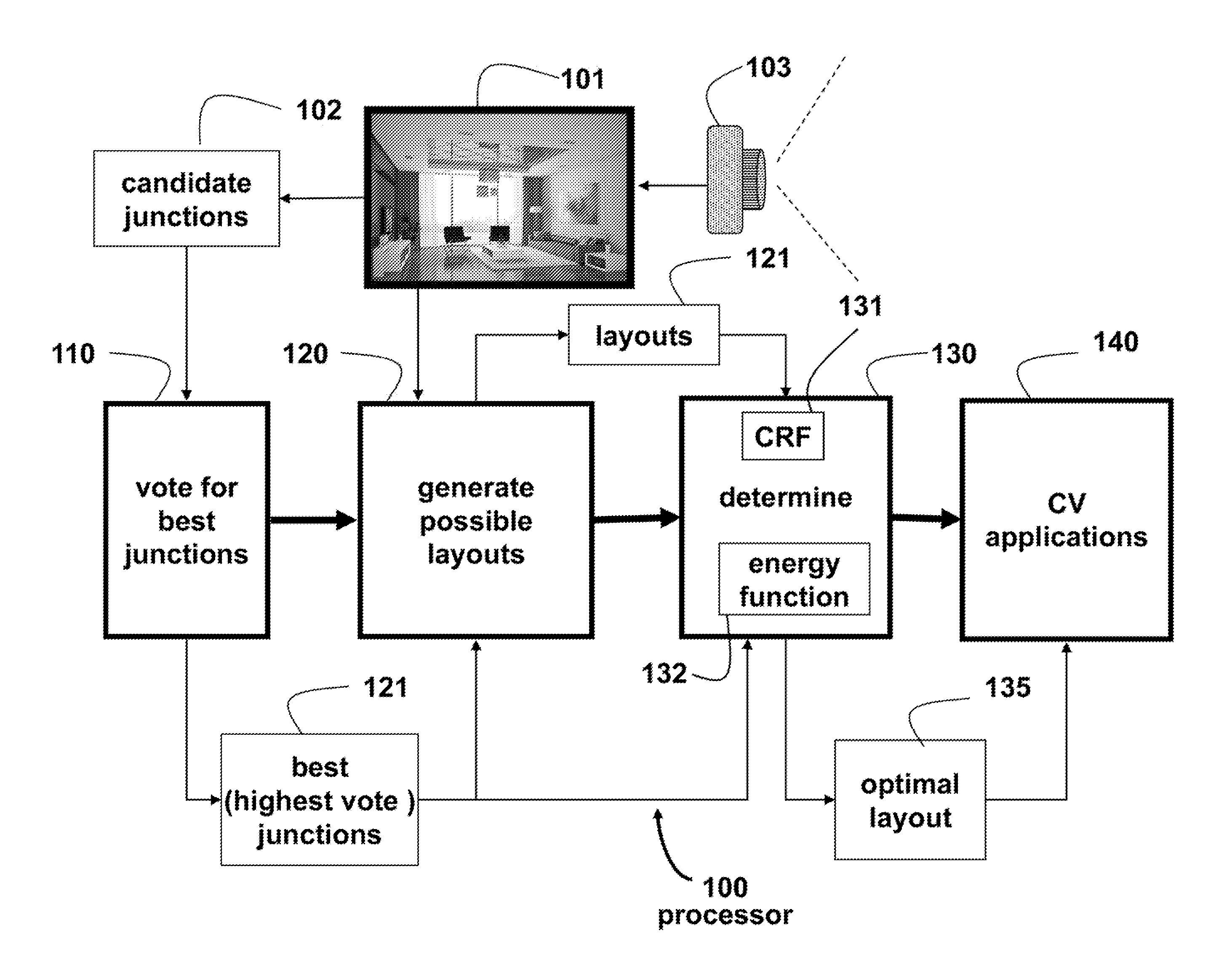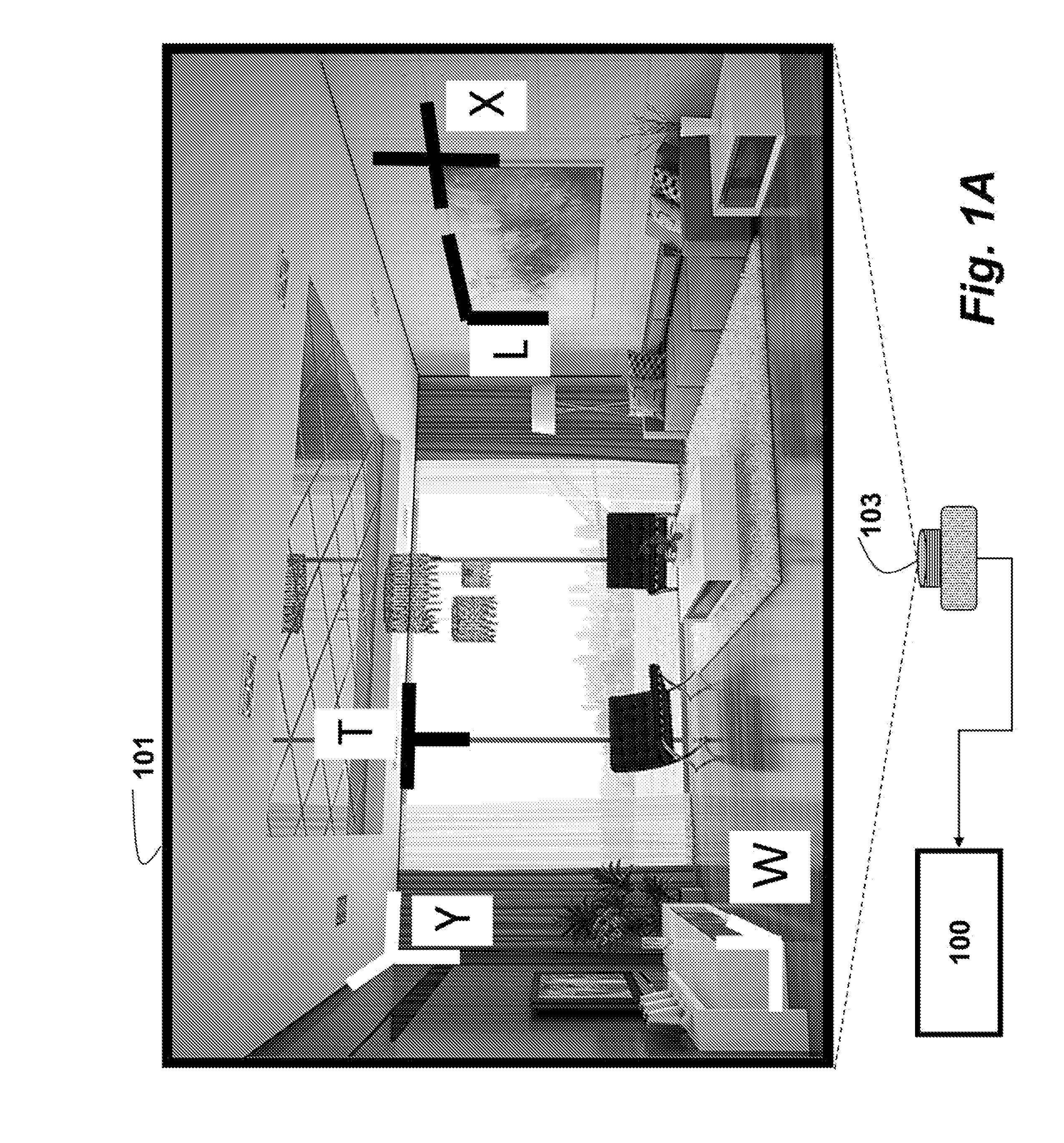Method For Reconstructing 3D Scenes From 2D Images
a two-dimensional image and scene technology, applied in the field of computer vision, can solve the problems of inability to infer constraints, innumerable and difficult classification of scenes in the real world, and difficult real-world scenes, so as to improve the possible layout of the scene and the pixel-level classification
- Summary
- Abstract
- Description
- Claims
- Application Information
AI Technical Summary
Benefits of technology
Problems solved by technology
Method used
Image
Examples
Embodiment Construction
[0031]The embodiments of our invention provide a method 100 for reconstructing a three-dimensional (3D) scene from a single two-dimensional image 101 such as shown in FIG. 1A. The image can be acquired by a monocular camera 103. We prefer a wide-angle camera to observe as much of the scene as possible.
[0032]FIG. 1A shows an image 101 of an indoor scene, e.g., a living room. Such man-made structures predominantly contain a large set of lines. Two or more lines intersect at different points. We call these intersections “junctions.” Based on the patterns formed by the lines, we classify the junctions as K, L, T, W, X and Y, junctions.
[0033]The types and locations of these junctions provide geometric cues about the scene. For example, the four corners of the room form Y junctions. The L, T and X junctions generally occur on planar surfaces, such as a wall, a ceiling, or a floor. The W junctions are common on the bottom of furniture boundaries and do not frequently appear on the walls an...
PUM
 Login to View More
Login to View More Abstract
Description
Claims
Application Information
 Login to View More
Login to View More - R&D
- Intellectual Property
- Life Sciences
- Materials
- Tech Scout
- Unparalleled Data Quality
- Higher Quality Content
- 60% Fewer Hallucinations
Browse by: Latest US Patents, China's latest patents, Technical Efficacy Thesaurus, Application Domain, Technology Topic, Popular Technical Reports.
© 2025 PatSnap. All rights reserved.Legal|Privacy policy|Modern Slavery Act Transparency Statement|Sitemap|About US| Contact US: help@patsnap.com



